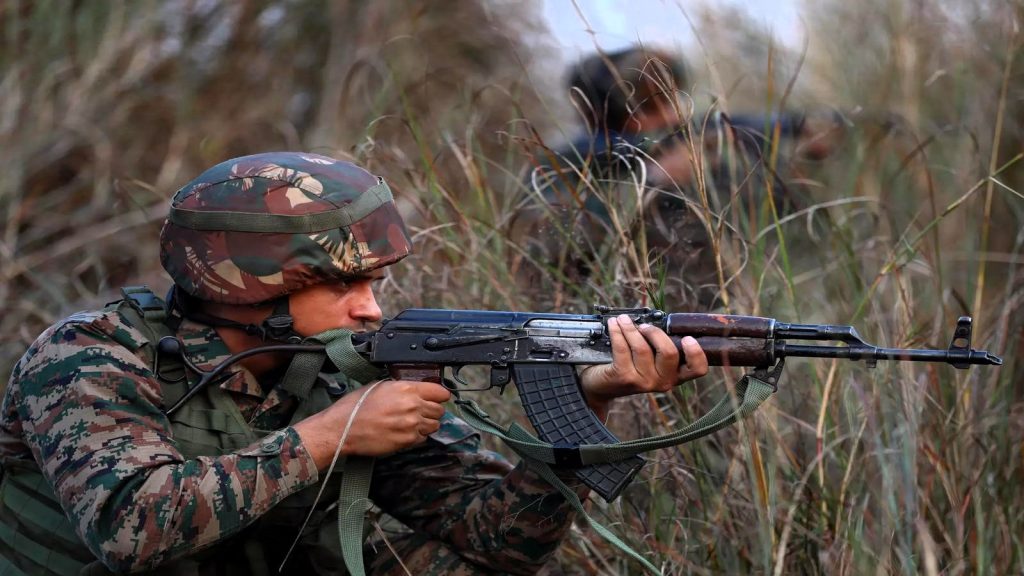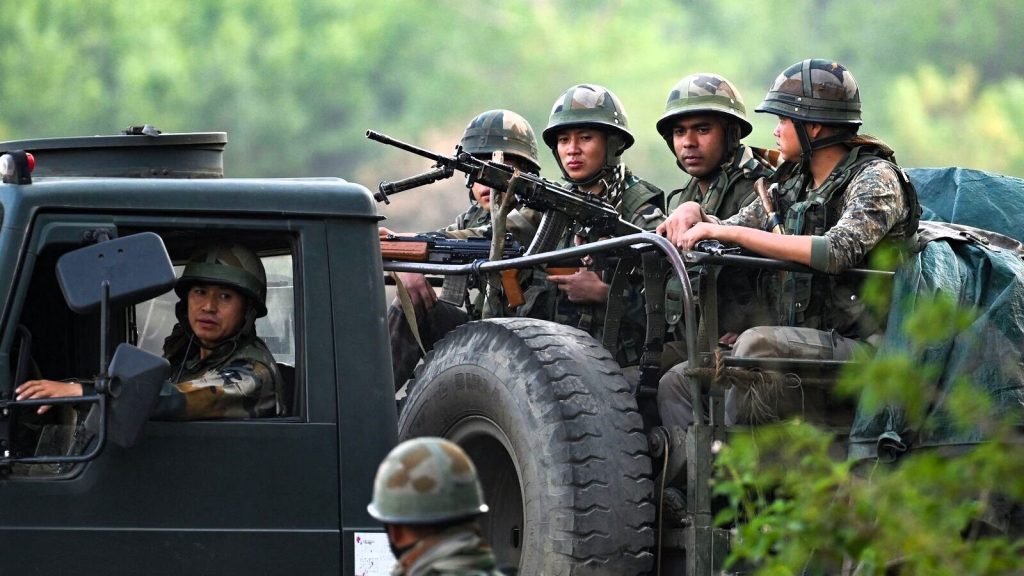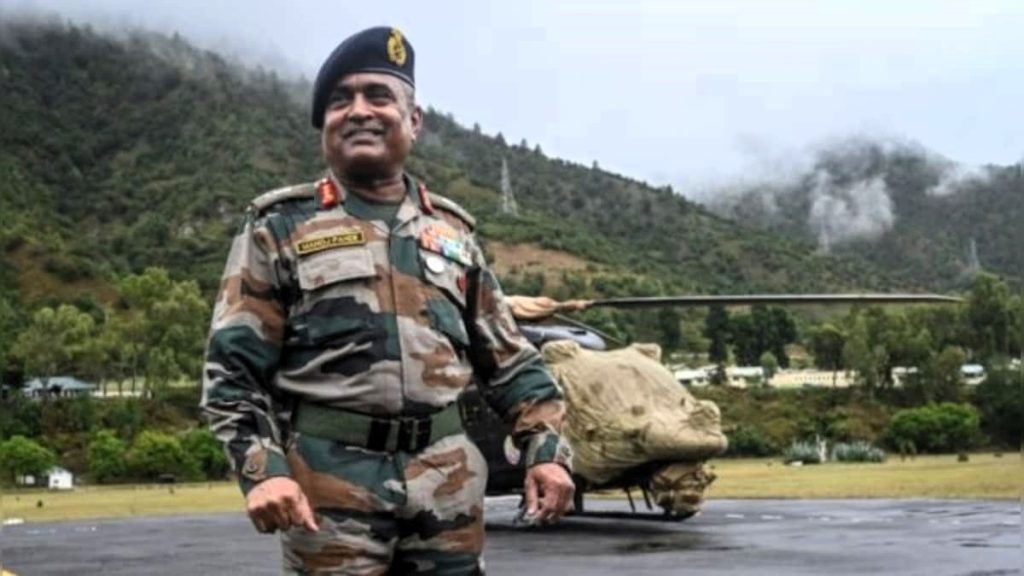Joint military exercises play a crucial role in enhancing military cooperation, interoperability, and strategic partnerships between nations. For the Indian Army, participating in joint exercises with other countries serves as an opportunity to exchange knowledge, tactics, and best practices, fostering stronger defense ties globally. This article provides a comprehensive list of joint military exercises conducted by the Indian Army with various countries, highlighting their significance and objectives.
Introduction
Joint military exercises are significant components of modern military diplomacy, enabling nations to bolster their defense capabilities while fostering cooperation and camaraderie with allied forces. For the Indian Army, participation in such exercises is instrumental in enhancing combat readiness, interoperability, and strategic cooperation. These exercises serve as platforms for sharing tactical knowledge, conducting joint operations, and enhancing mutual understanding among participating nations.
They cover a spectrum of practices, ranging from counterterrorism and peacekeeping operations to humanitarian assistance and disaster relief. By engaging in joint military exercises, the Indian Army not only strengthens its own preparedness but also contributes to regional stability and security. In this article, we will look into some of the significant joint military exercises undertaken by the Indian Army, highlighting their objectives, participating nations, and outcomes.
List of Joint Military Exercises of the Indian Army
India regularly conducts joint military exercises with various countries, including its neighbors, strategic allies, and other international partners. These exercises cover a wide range of scenarios, from counterterrorism operations to maritime security drills, and from humanitarian assistance to peacekeeping missions. Through these collaborative endeavors, India seeks to strengthen regional stability, promote peace and security, and build trust and confidence among nations in the region and beyond. Let us go through a comprehensive list of Joint Military Exercises of the Indian Army with some partner countries:-
India- Africa Joint Military Exercise AFINDEX-23 Concludes
Everything You Need To Know: India Oman Joint Military Exercise ‘AL NAJAH-IV’
| Exercise Name | Partner Country/Countries | Forces Involved |
|---|---|---|
| Vajra Prahar | United States | Army |
| Sada Tanseeq | Saudi Arabia | Army |
| Shakti | France | Army |
| Ajeya Warrior | United Kingdom | Army |
| Hand-in-Hand | China | Army |
| Indra | Russia | Army |
| Maitree | Thailand | Army |
| Sampriti | Bangladesh | Army |
| Surya Kiran | Nepal | Army |
| Ex-Desert Knight | United Arab Emirates | Air Force |
| Vinbax | Vietnam | Navy |
| Al Nagah | Oman | Army |
| Mitra Shakti | Sri Lanka | Army |
| Ekuverin | Maldives | Army |
| Garuda | Indonesia | Air Force |
| Lamitye | Seychelles | Army |
| Bold Kurukshetra | Singapore | Army |
| Yudh Abhyas | United States | Army |
| Indra Dhanush | United Kingdom | Army |
| Samudra Shakti | Indonesia | Navy |
| Simbex | Singapore | Navy |
| Varuna | France | Navy |
| Konkan | United Kingdom | Navy |
| SLINEX | Sri Lanka | Navy |
| Milan | Bangladesh | Navy |
| AUSINDEX | Australia | Navy |
| MALABAR | United States, Japan | Navy |
| IMCOR | Malaysia | Navy |
| Naseem Al Bahr | Oman | Navy |
| AusIndo Corpat | Australia, Indonesia | Navy |
| AusMalai | Australia, Malaysia | Navy |
| Desert Eagle | United Arab Emirates | Air Force |
| Blue Flag | United States | Air Force |
| Desert Knight | United Arab Emirates | Air Force |
| Cope India | United States | Air Force |
| Eastern Bridge | Bangladesh | Air Force |
| Red Flag | United States | Air Force |
| Garuda | France | Air Force |
| Pitch Black | Australia | Air Force |
| Sindex | Singapore | Air Force |
| Siam Bharat | Thailand | Air Force |
| Shinyuu Maitri | Japan | Air Force |
| Saffron Bandit | Singapore | Air Force |
| Blue Flag | United States | Air Force |
| Ekuverin | Maldives | Army |
| Nomadic Elephant | Mongolia | Army |
Popular Joint Military Exercises of the Indian Army
Let us delve deeper into some of the most popular exercises of the Indian Army, including their important details:
1. Yudh Abhyas Exercise:
- Description: Yudh Abhyas is an annual bilateral military exercise between the Indian and United States armies.
- Objective: It focuses on enhancing interoperability and cooperation in counterterrorism and disaster relief operations.
- Activities: The exercise includes joint training exercises, simulations, and exchange of best practices.
- Significance: Yudh Abhyas aims to strengthen the strategic partnership between India and the United States.
2. Shakti Exercise:
- Description: Shakti is a series of exercises conducted between India and France.
- Objective: The exercise aims to strengthen the strategic partnership and military ties between the two nations.
- Activities: It involves joint drills, maneuvers, and training sessions in diverse terrains.
- Significance: Shakti focuses on enhancing interoperability and cooperation in counterterrorism and peacekeeping operations.
3. Ajeya Warrior Exercise:
- Description: Ajeya Warrior is a biennial exercise between the Indian and British armies.
- Objective: The exercise primarily focuses on joint training in counterterrorism and urban warfare scenarios.
- Activities: It includes live-fire drills, tactical exercises, and joint planning sessions.
- Significance: Ajeya Warrior aims to enhance mutual understanding, cooperation, and interoperability between the two armies.
4. Hand-in-Hand Exercise:
- Description: Hand-in-Hand is an annual exercise between India and China.
- Objective: The exercise aims to enhance mutual trust and cooperation between the two neighboring countries’ armies.
- Activities: It includes joint exercises, cultural exchanges, and counterterrorism and disaster relief seminars.
- Significance: Hand-in-Hand promotes peace, stability, and understanding along the India-China border.
5. Indra Exercise:
- Description: Indra is a bilateral military exercise between India and Russia.
- Objective: The exercise focuses on joint training in counterterrorism, peacekeeping, and humanitarian assistance operations.
- Activities: It includes tactical drills, simulated combat scenarios, and military tactics and strategy sharing.
- Significance: Indra aims to strengthen the strategic partnership and defense cooperation between India and Russia.
6. Nomadic Elephant Exercise:
- Description: Nomadic Elephant is an annual bilateral exercise between India and Mongolia.
- Objective: The exercise focuses on enhancing military cooperation and interoperability between the two nations.
- Activities: It involves joint training in mountain warfare, counterinsurgency operations, and disaster relief.
- Significance: Nomadic Elephant aims to strengthen the friendship and strategic partnership between India and Mongolia.
7. Surya Kiran Exercise:
- Description: Surya Kiran is a biannual exercise between India and Nepal.
- Objective: The exercise aims to enhance military-to-military cooperation and interoperability between the two countries.
- Activities: It includes joint training in counterterrorism, disaster relief, and search and rescue operations.
- Significance: Surya Kiran aims to promote peace, stability, and understanding between India and Nepal.
8. Garuda Exercise:
- Description: Garuda is a bilateral exercise between India and France.
- Objective: The exercise focuses on enhancing operational cooperation and interoperability between the air forces of both countries.
- Activities: It includes joint aerial maneuvers, air combat drills, and the exchange of best practices.
- Significance: Garuda aims to strengthen the strategic partnership and defense ties between India and France.
Russia, India Closer To Joint Military Equipment Production
9. Malabar Exercise:
- Description: Malabar is a trilateral naval exercise between India, the United States, and Japan.
- Objective: The exercise focuses on enhancing maritime security, interoperability, and cooperation in the Indo-Pacific region.
- Activities: It includes naval drills, anti-submarine warfare exercises, and aircraft carrier operations.
- Significance: Malabar aims to promote peace, stability, and freedom of navigation in the region.
10. Varuna Exercise:
- Description: Varuna is a bilateral naval exercise between India and France.
- Objective: The exercise aims to enhance maritime cooperation, interoperability, and understanding between the two navies.
- Activities: It includes naval maneuvers, anti-aircraft warfare drills, and maritime domain awareness exercises.
- Significance: Varuna aims to strengthen the strategic partnership and defense collaboration between India and France.
Conclusion
Participation in joint military exercises is a vital aspect of India’s defense diplomacy, allowing the Indian Army to enhance its capabilities, foster cooperation with partner countries, and contribute to regional security and stability. The exercises discussed above represent a diverse range of engagements aimed at addressing various security challenges and strengthening defense partnerships. By continuing to participate in such exercises, India reinforces its commitment to promoting peace, security, and cooperation in the region and beyond.
FAQs
1. What are joint military exercises?
Joint military exercises are collaborative training programs conducted between the armed forces of two or more countries. These exercises aim to enhance military cooperation, interoperability, and strategic partnerships while fostering mutual understanding and trust among participating nations.
2. Why does the Indian Army participate in joint military exercises?
The Indian Army participates in joint military exercises to strengthen its defense capabilities, build interoperability with partner countries, exchange best practices, and enhance strategic cooperation. These exercises also contribute to regional stability, peacekeeping efforts, and counterterrorism operations.
3. How often does the Indian Army conduct joint military exercises?
The Indian Army conducts joint military exercises regularly throughout the year, with various countries, including its neighbors, strategic allies, and other international partners. Some exercises are conducted annually, while others are biennial or conducted at irregular intervals based on strategic priorities and agreements.
4. What are the objectives of joint military exercises?
The objectives of joint military exercises include improving combat readiness, enhancing interoperability, practicing joint operations, sharing tactical knowledge and expertise, building trust and confidence among participating nations, and promoting regional security and stability.
5. How are joint military exercises beneficial for the Indian Army?
Participation in joint military exercises provides several benefits to the Indian Army, including exposure to different operational environments and tactics, learning from the experiences of partner countries, improving coordination and communication skills, and fostering strategic partnerships for mutual defense and security.
6. Which countries does the Indian Army conduct joint military exercises with?
The Indian Army conducts joint military exercises with a wide range of countries, including the United States, Russia, France, the United Kingdom, China, Nepal, Bangladesh, Sri Lanka, Mongolia, and many others. These exercises cover various aspects of military operations, including land, air, and naval components.
7. How can individuals stay informed about upcoming joint military exercises involving the Indian Army?
Individuals can stay informed about upcoming joint military exercises involving the Indian Army by following official announcements from the Ministry of Defence, Indian Army, and other relevant government sources. Additionally, news agencies and defense-related websites often provide updates on such exercises.
8. Are joint military exercises open to the public for observation?
Joint military exercises involving the Indian Army are generally not open to the public for observation due to security concerns and operational sensitivities. However, some exercises may include media coverage or public demonstrations during specific phases or events.
9. How do joint military exercises contribute to regional security and stability?
Joint military exercises contribute to regional security and stability by promoting cooperation, trust, and understanding among participating nations. They help build capacity for coordinated responses to common security challenges, deter aggression, and enhance crisis management capabilities, thereby reducing the risk of conflict and instability.
10. Can individuals participate in joint military exercises as observers or non-combatants?
Individuals typically cannot participate directly in joint military exercises as observers or non-combatants unless they are part of official delegations, media personnel with proper accreditation, or invited guests. However, some exercises may include public outreach activities or demonstrations for informational purposes.




























